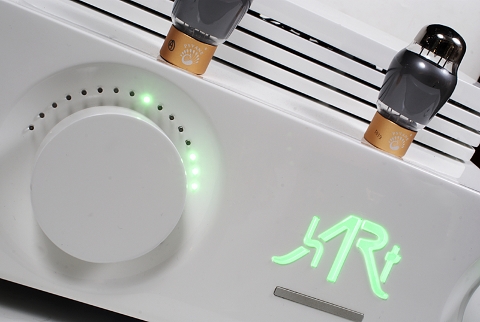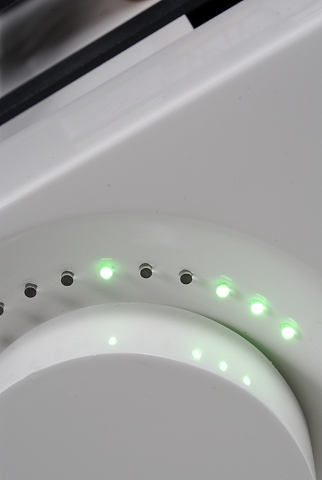about Audio, High Fidelity
& Home Entertainment technologies
pid: 607-2025/10/01 (v1.2)
Privacy Policy

For this review, the Tune Two was accompanied by a Tune Three power amp, to evaluate the preamplifier's capabilities through the Direct output. A significant portion of the listening sessions were conducted with the two devices operating as a pair in this manner. However, another important part of the listening sessions was done in the traditional way, with Tune Two replacing the reference preamplifier (Melos Plus Series Line) and driving the reference power amplifier (Parasound HCA3500). In all cases, the speakers were the ATC SCM-50 PSL, while the sources used were the WiiM Pro/Teac Esoteric D70 combination (feeding a line input) and the Linn Sondek LP12/Ittok/Karma (connected to the Phono input). Part of the listening was done via the streamer, for which purpose the preamplifier was connected to the home network via Ethernet. In this case, the Volumio player app was used.
The preamplifier doesn't pose difficulties during initial setup, as long as you take a look at the well-written user manual, especially the part concerning its connection to Ethernet and the use of WebUI, as well as the settings for the phono cartridge. The latter requires the use of the two hidden switches at the bottom of the device, but once you locate them, there's no difficulty.
The first impression one gets when listening to the Tune Two concerns the differences between the Main and Directed outputs. These differences are quite related to the power amplifier connected. In comparison, with a Direct connection, using the Tune Three, I got a sound closer to the aesthetic of the hARt as I had evaluated it in the Tune Three review, with a homogeneous, pleasant sense of neutrality, very good dynamics, slightly rounded high frequencies (which never become euphonic, however), stereo imaging offering a feeling of discipline and with very good descriptive abilities — qualities that I had evaluated very positively in the review of the Tune Three power amplifier. When Tune Two drove the Parasound HCA3500, whose input impedance is much higher than the lower limit given by the company (100kΩ, compared to 30kΩ, so there is no issue of poor matching), the sound of the reference system closely approached what I'm accustomed to, indicating that the preamplifier is sufficiently transparent and tonally neutral, without an excessive character. Via the Main connection, the system didn't change significantly (despite the slightly inferior lab performance). With the Tune Three at the output, the basic values were maintained, while with the HCA3500, subjectively, I got a slightly better sense of speed and punch. It's possible that these characteristics already exist in the Tune Two but the semicon-based architecture of the HCA3500 amplifies them better.
To the details, with Tune Two acting as the preamplifier, the system maintained its extension towards the very low part of the audio spectrum, with a very good feeling of volume, clarity, and pulse and, also, demonstrating a relative strictness. It comfortably filled the listening room space without any signs of compression and sounded imposing when the recording demanded it. Recordings with serious content in the very low-frequency part of the audio band sounded dynamic, with a strong presence, and appropriately big in size.
Overall, the low-frequency range of the preamplifier seems to be characterized by clarity and a very good sense of scale. Nothing sounds smaller or larger than it should, which contributes to the impression of accuracy the preamp creates. The rhythmic section parts were described with good volume, full-bodied without becoming excessive, but instead sounded well-controlled, with the listener feeling that the music rolls pleasantly and effortlessly.
The midrange performance is one of the strong points of the preamplifier, which is probably due to its tube stage. This is a feeling I had because, in the notes of the Tune Three review, I found the same comment. The result with Tune Two was balanced, pleasant, and realistically radiant, slightly behind the horizontal sound stage front axis, with a sense of naturalness, combined with good transparency, layering, and a good sense of air. It will never become tiring, even at high levels, but it's neither rough nor euphonic. The preamplifier combines a well-designed character with the necessary accuracy. Nothing is missing.
The vocals were rendered with a strong sense of presence in the space, for soloists and a very good description of the choral groups, with clear focus, description of movement and air. The timbres and articulation are wonderfully rendered, and with the right music work, the system can sound impressively realistic.
This performance is combined with a very good stereo image, which is clearly defined, disciplined with good depth and serious focusing and description of movement for individual sound sources in the space. The final result is very lively, with a sense of presence, occasionally imposing, especially if some good work has been done on the soundscaping of the recording.
Towards the higher part of the audio spectrum, the time characteristics of the preamplifier sounded imposing, with impeccable attacks and decays and a full description of the body, in percussion instruments. There was, also, a good sense of extension, and exceptional harmonics, with the sound being lively, bright, and pleasantly warm. The complete absence of harshness is impressive, with the listener becoming the recipient of a very relaxed, detail-rich listening experience.
The headphone amplifier was called upon to drive the AKG K712PRO (62Ω). The first thing you'll notice is the very low noise, a factor that allows the dynamic contrast of the recording to pass through to the listener's ears. The headphone output drove the headphones comfortably… to unacceptably high levels (as far as one's hearing health is concerned), demonstrating its ability to handle demanding headphones (although the K712 is not one of them). Across the spectrum, I experienced homogeneity, well extended, rich, and pleasant low end, a strong sense of rhythm, and high frequencies similar in character to those reproduced by the preamplifier and described above. It is clear that the Tune Two can be used as a headphone amplifier in a high-demand binaural listening system.
I had a similar impression created by the phono preamplifier. The noise was low, and the overall sound was dynamic with good speed, tight, well-controlled bass, and very accurate timing characteristics in the high-frequency range. The system maintained its very good stereo imaging capacity, and -overall- the final result seemed capable of keeping up with high-quality vinyl pressings.
Finally, the digital part, the streamer, and the DAC proved to be transparent and neutral so as not to affect the overall character of the preamplifier. The result was what you would expect from streaming files, namely exceptional detail, and texture combined with tonal neutrality, upon which the exceptionally discreet tube-driven character of the preamplifier is superimposed, a truly addictive combination, epitome - perhaps - of an audiophile ideal.
Conclusion
The first word that comes to mind is "Consistency." Having already experienced how hARt designs their devices, the Tune Two is exactly what you expect. A distinctive -and at the same time well-balanced- approach, the implementation of a specific perspective, perfectly executed with attention to detail and complete in terms of the capabilities expected from the preamplifier by today's user. I can "see" a Tune Two/Tune Three pair in the listening room of every demanding listener who seeks something outstanding and distinctive and is willing to invest in it. If High Fidelity has a kind of an artistic side, then Tune Two is, indeed, a work of art that you could enjoy looking at, feeling of, and listening to!
Previous | Next | More Reviews



